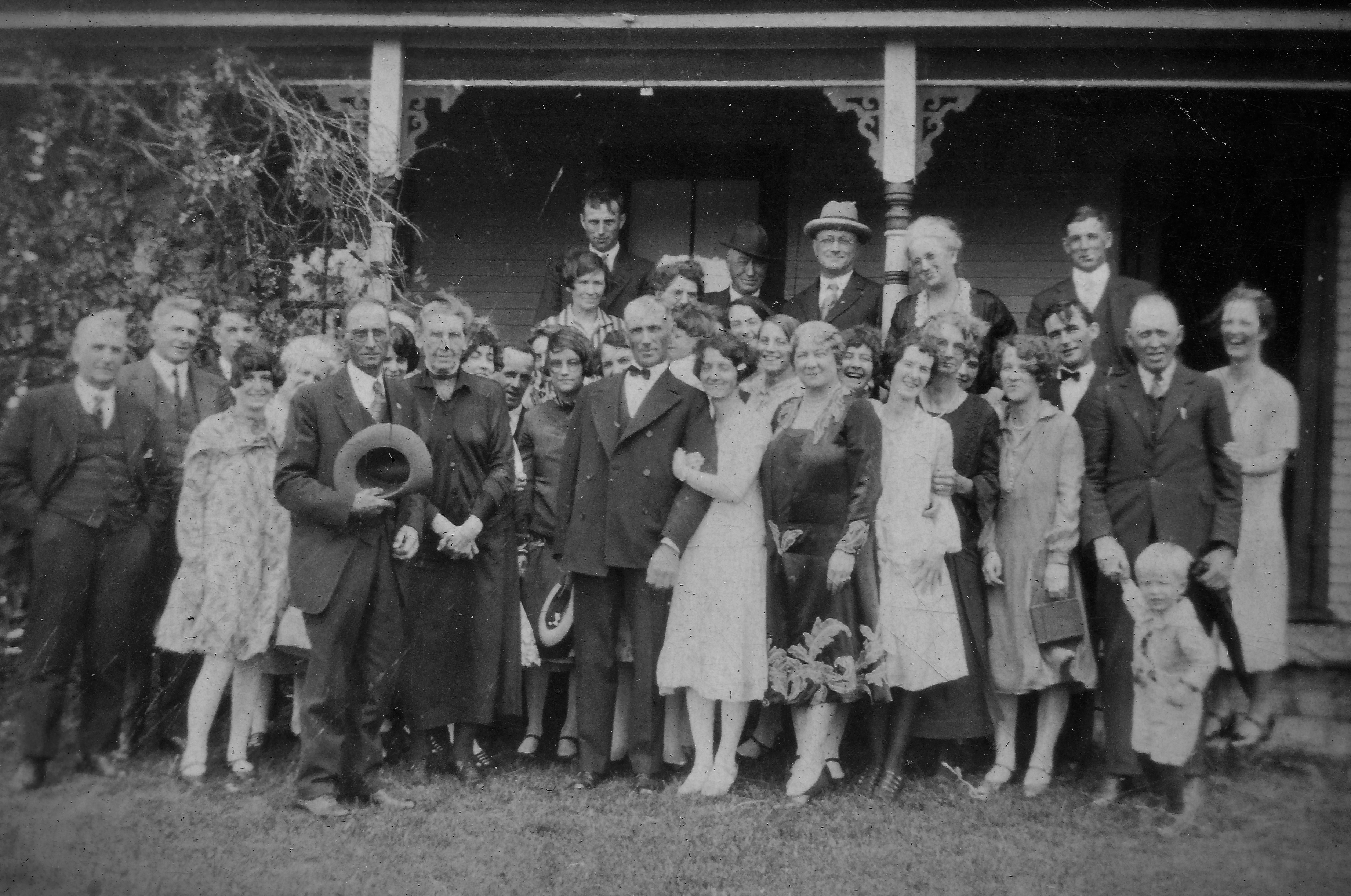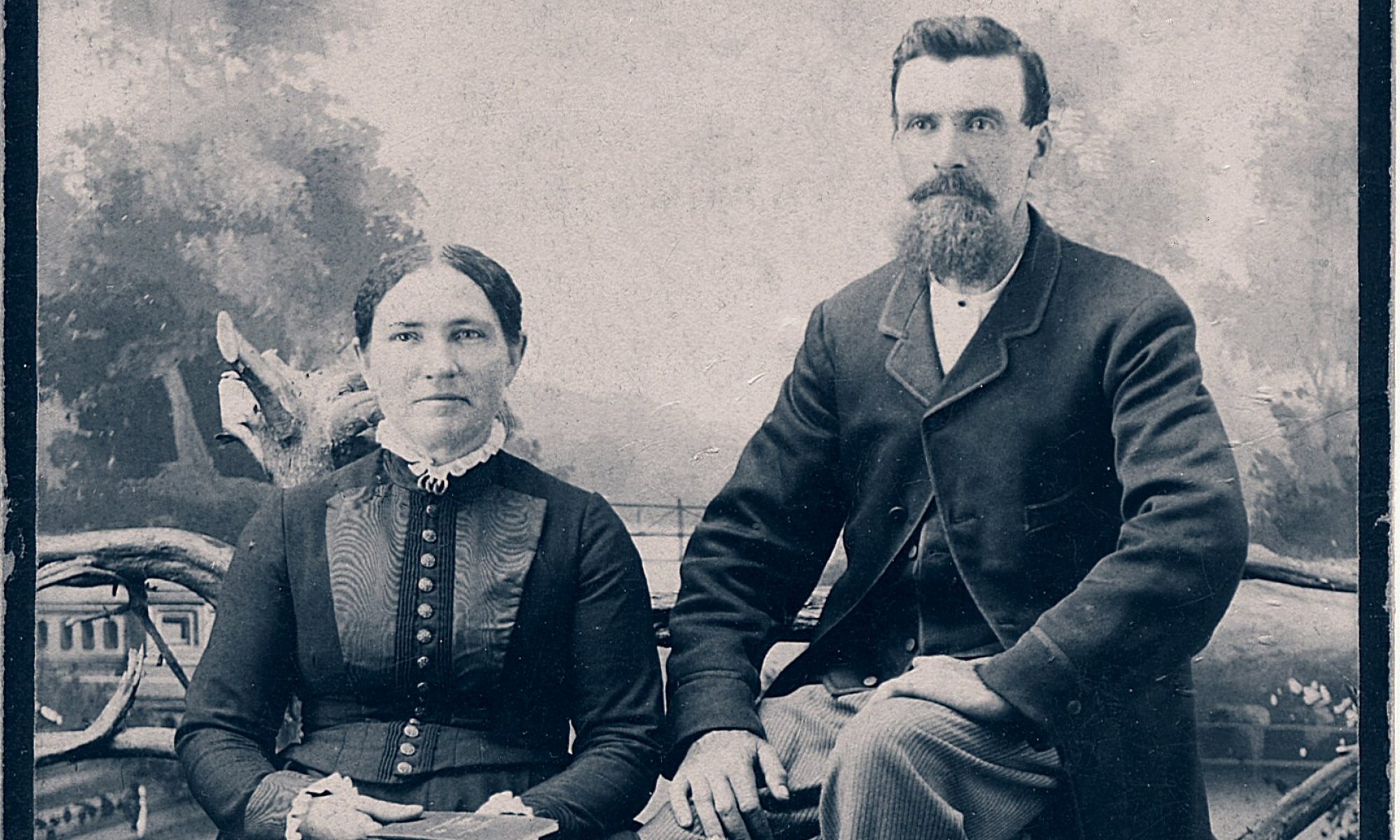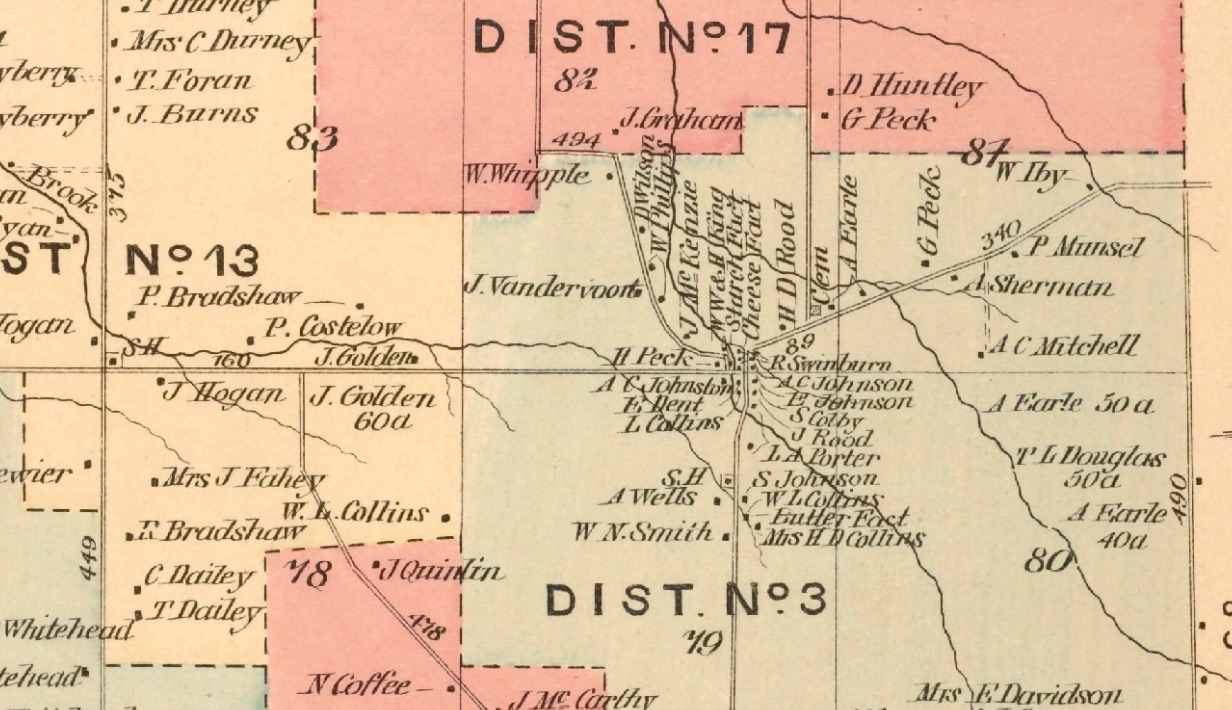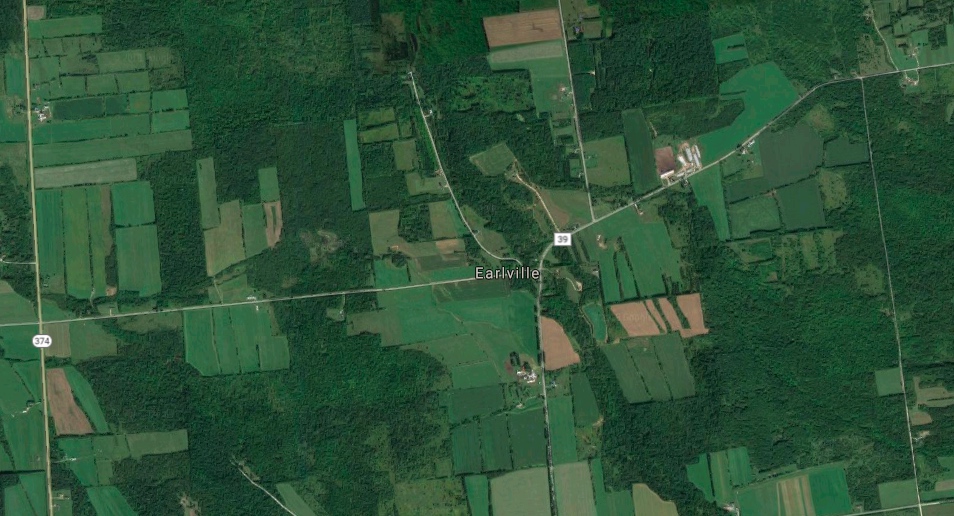
Here’s a picture from my Grandparents’ wedding day in 1926. My Grandfather, Patrick Bradshaw married my Grandmother, Henrietta Cassidy on Wednesday, September 1st, at (yikes) 7:00 in the morning. Grandpa must have gotten someone else to milk the cows that day.
This photo is the first photo on the first page of a very old photo album that has found its way into my possession. I assume that Grandma put it together.
Written above the photo are the words “Guests at the home of Mrs. C. Cassidy. Can you spot the bride and Groom?”
Here’s a link to their wedding announcement in the Chateaugay Record
Patrick is 45 here and Henrietta 31. It was Grandpa’s second marriage. His first wife, Rosetta had passed away in 1922, leaving him with two young sons (Uncle John and Uncle Gerald), they would have been around 5 or 6.
Most of the people in this photo will remain anonymous forever, but I do recognize a few. Will Dwyer and Clare Cassidy (soon to be Dwyer) are there. They were best man and maid of honor. I see Aunt Leona Cassidy (McCormick) laughing. I’m reasonably sure that the white haired lady at the back is Clarinda Patenaude Cassidy – Henrietta’s mother.
I’m very curious about the man standing next to Grandpa. He seems to resemble Pat,. He seems older , so I first thought that he might be Pat’s father (also named Pat – when we find a name we like, we keep using it). He certainly seems to resemble the man in this picture. But Great-Grandpa Bradshaw would have been in his early eighties, and this fellow seems younger than that. I’m wondering if it’s Grandpa’s brother Billy (William).
The people on the right are laughing, and seem to be having a good time. Even Great-grandma Cassidy (who by most accounts was not a lot of yuks). The people on the left don’t seem to be having as much fun. A lot of the folks on the right are Cassidys. It would seem logical (although I have no idea) that those on the right are Bradshaws.
Grandma and Grandpa seem to underscore this division between the laughing, boisterous guests on the right, and the grim pair directly to the left. Grandma is smiling, genuinely happy. I’m not sure what to make of Grandpa’s expression and stance.
So – there’s lots more to write about Pat and Henrietta and their life together. I just thought some of the readers of this blog – all 15 of you 😉 – would be interested to see something about Grandpa and Grandma, since I’ve spent most of the words in this blog talking about Grandpa’s siblings. I have certainly spent a lot of time staring at this photo, hoping for some revelation or insight about these people.
So PLEASE DO let me know if you recognize anyone in this photo.
As always, comments of any kind are most welcome.
Thanks again for reading.


